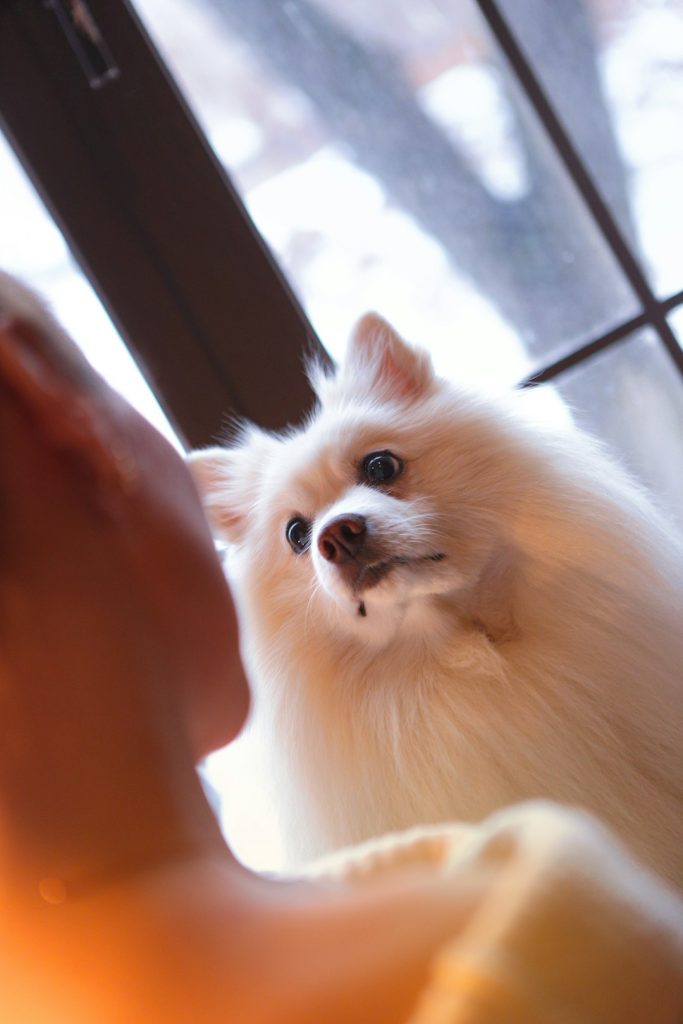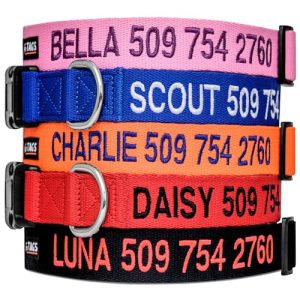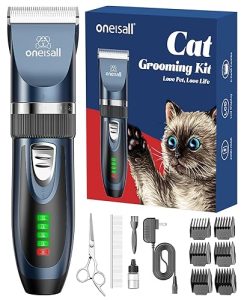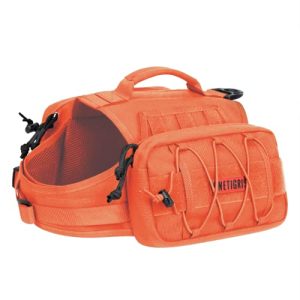Have you ever noticed how your dog acts during grooming time? Understanding dog grooming behavior can make these moments easier and more enjoyable for both of you.
When you know why your dog reacts a certain way, you can reduce stress and make grooming smoother. You’ll discover simple tips to read your dog’s signals and turn grooming into a positive experience. Keep reading to learn how to connect better with your furry friend and make grooming less of a battle.
Signs Of Stress In Dogs
Dogs show stress in many ways. It is important to notice these signs early.
Recognizing stress helps you keep your dog calm and safe during grooming.
Body Language Cues
Dogs use their body to show stress. Watch for stiff posture or lowered body.
Other signs include tucked tail, raised hackles, and avoiding eye contact.
- Stiff or tense muscles
- Tucked tail between legs
- Raised fur along the back
- Avoiding eye contact or looking away
- Licking lips or yawning often
Vocalizations And Sounds
Dogs use sounds to express discomfort or stress. Pay attention to changes in their voice.
Whining, growling, or excessive barking can all mean your dog feels stressed.
- Whining or whimpering
- Low growling or snarling
- Excessive barking or howling
- Heavy panting without exercise
Avoidance And Resistance
Dogs may try to avoid grooming if they feel stressed. Notice their efforts to get away.
Resistance can include pulling back, hiding, or refusing to cooperate.
- Trying to move away or escape
- Hiding behind furniture or people
- Refusing to stand or sit still
- Snapping or biting as a warning
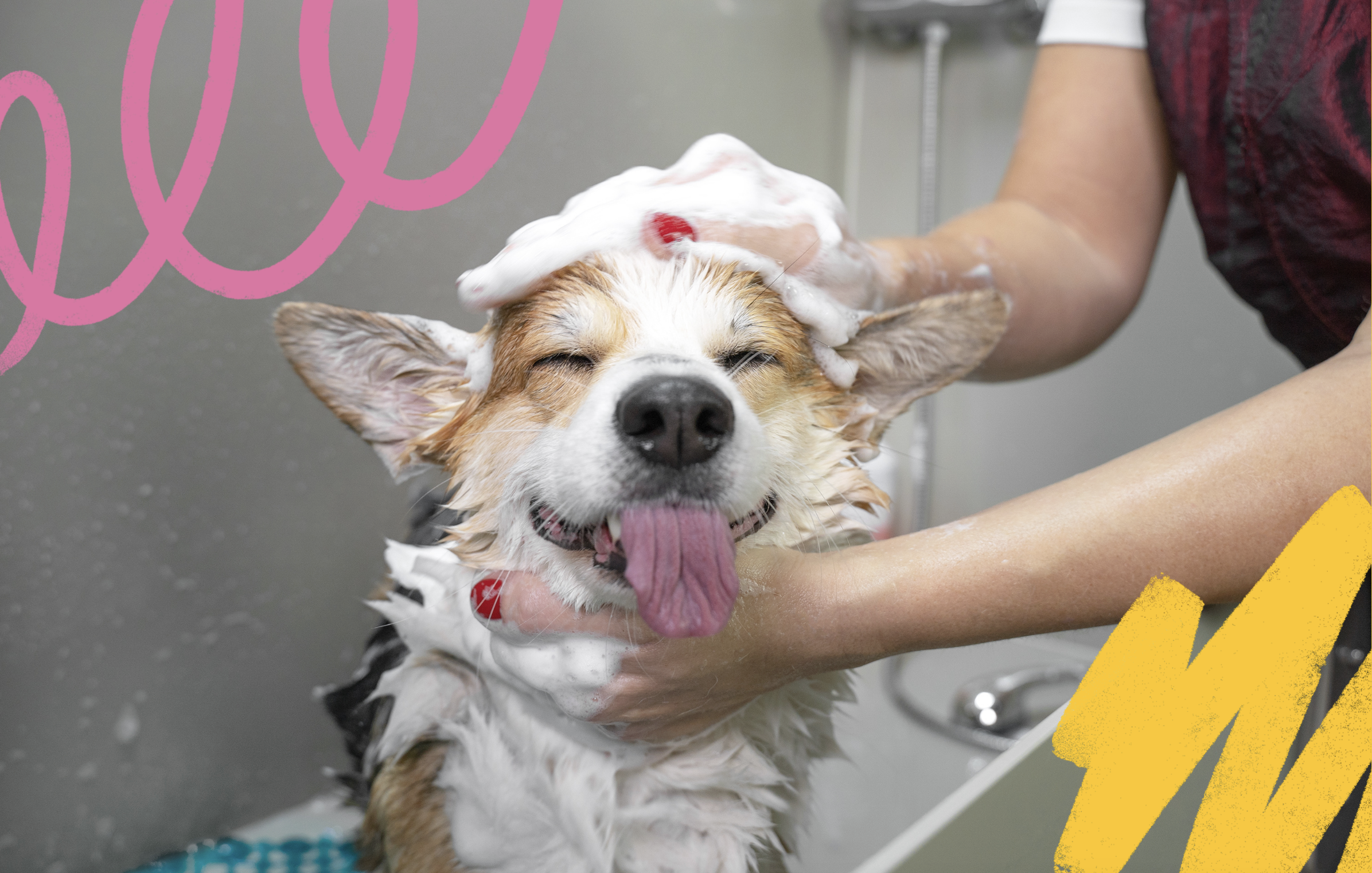
Credit: www.dogtv.com
Building Trust During Grooming
Grooming is important for your dog’s health. Building trust makes grooming easier. Understanding your dog's behavior helps.
Creating a calm environment and using positive techniques can help. Gradual desensitization reduces stress over time.
Creating A Calm Environment
A calm space helps your dog relax during grooming. Soft music and gentle lighting can soothe your pet.
- Keep the grooming area free of loud noises
- Use a non-slip mat for comfort
- Ensure the room is at a comfortable temperature
Positive Reinforcement Techniques
Reward your dog for good behavior during grooming. Treats and praise encourage them to stay calm.
| Action | Reward |
| Standing still | Small treat |
| Allowing nail trimming | Praise and petting |
| Staying calm | Favorite toy |
Gradual Desensitization
Introduce grooming tools slowly. Let your dog sniff and explore them first. Gradual exposure reduces fear.
Common Grooming Challenges
Grooming dogs can be hard because each dog acts differently. Some dogs get scared or upset during grooming. Understanding these common challenges helps keep grooming safe and calm.
Knowing how to handle fear, sensitive spots, and aggression makes grooming easier. It helps dogs feel safer and more relaxed.
Fear Of Clippers And Scissors
Many dogs fear the noise and feel of clippers or scissors. This fear can cause them to shake, hide, or try to run away. It makes grooming difficult and stressful.
To reduce fear, start by letting dogs see and smell the tools. Use the clippers or scissors near them without cutting. Give treats and praise to create a positive feeling.
Handling Sensitive Areas
Dogs have spots that feel very sensitive, like paws, ears, and tails. Grooming these areas can cause discomfort or pain. Dogs may pull away or snap if touched too roughly.
Be gentle and slow when working on sensitive parts. Use soft tools and calm your dog with soft words. Take breaks if the dog seems stressed.
- Touch sensitive areas before grooming to get the dog used to it
- Use small, gentle strokes with clippers or brushes
- Stop if the dog shows signs of pain or fear
Dealing With Aggression
Some dogs become aggressive during grooming. They may growl, bite, or snap out of fear or pain. Aggression can make grooming unsafe for both dog and groomer.
Stay calm and do not punish the dog. Try to find the cause of aggression like pain or fear. Use slow, gentle movements and give the dog space if needed.
- Work with a professional groomer if aggression is strong
- Use muzzles or restraints only if needed and safe
- Reward calm behavior with treats and praise

Credit: www.thedogbehaviorinstitute.com
Grooming Tools And Their Effects
Grooming your dog is important for their health and happiness. The tools you use can affect your dog’s comfort and behavior. Choosing the right tools helps make grooming easier for both you and your pet.
Different tools have different effects on your dog’s skin and coat. Knowing how to use them safely keeps your dog calm and clean.
Choosing The Right Brushes
Brushes come in many types, each for different fur textures. Using the right brush prevents pain and skin damage.
- Slicker brushes remove loose fur and mats.
- Bristle brushes smooth short hair and add shine.
- Pin brushes work well for long, thick coats.
- Undercoat rakes remove dead hair under the topcoat.
Using Safe Clippers
Clippers must be sharp and quiet to avoid hurting or scaring your dog. Dull blades can pull hair and cause pain.
| Clipper Feature | Effect on Dog |
| Sharp Blades | Clean cut, less pulling |
| Quiet Motor | Less noise stress |
| Adjustable Speed | Better control on sensitive areas |
| Cooling System | Prevents skin burns |
Impact Of Grooming Products
Shampoos, conditioners, and sprays can help keep your dog’s coat healthy. Using safe, gentle products reduces skin irritation and allergic reactions.
Here are some tips for choosing grooming products:
- Pick products made for dogs, not humans.
- Choose hypoallergenic formulas for sensitive skin.
- Test a small area before full use.
- Avoid products with harsh chemicals or strong scents.
Routine Grooming Benefits
Regular grooming helps dogs stay clean and healthy. It also makes pets feel comfortable and happy.
Grooming is more than just cleaning. It supports your dog’s health and improves your relationship.
Health Improvements
Routine grooming keeps your dog’s skin and coat healthy. It removes dirt, dead hair, and pests.
Regular checks during grooming help find health issues early. This can prevent serious problems.
- Reduces risk of skin infections
- Prevents matting and hair loss
- Detects lumps or wounds early
- Keeps nails trimmed to avoid pain
Strengthening Bond With Pets
Grooming sessions create time to connect with your dog. This builds trust and love.
Pets enjoy gentle touch and attention. Grooming helps dogs feel safe and cared for.
- Improves communication between you and your dog
- Builds a routine your pet can expect
- Increases comfort during handling
Reducing Anxiety Over Time
Dogs may feel nervous during grooming at first. Regular sessions reduce fear and stress.
Routine grooming helps dogs get used to touch and sounds. This makes future grooming easier.
- Creates a calming routine
- Reduces fear of grooming tools
- Helps dogs relax with consistent care
Tips For First-time Groomers
Grooming a dog for the first time can be a new experience. It needs patience and care.
This guide helps you prepare and handle your dog's behavior during grooming.
Preparation And Planning
Prepare your tools and space before grooming your dog. Have everything ready.
Choose a quiet and comfortable area where your dog feels safe.
- Gather brushes, combs, scissors, and nail clippers.
- Use a non-slip mat to keep your dog steady.
- Have treats to reward your dog for good behavior.
Handling Unexpected Behavior
Dogs may act nervous or restless during grooming. Stay calm and gentle.
Take breaks if your dog gets upset. Speak softly and offer treats.
- Use slow, steady movements to avoid startling your dog.
- Watch for signs of stress like whining or trying to escape.
- Stop if your dog shows aggression or fear.
When To Seek Professional Help
Some dogs need help from a professional groomer. Know when to ask for help.
If your dog is very scared, aggressive, or hard to handle, get expert care.
- If grooming causes pain or injury, stop and see a vet or groomer.
- Professional groomers have tools and skills for difficult dogs.
- Regular professional grooming keeps your dog healthy and happy.
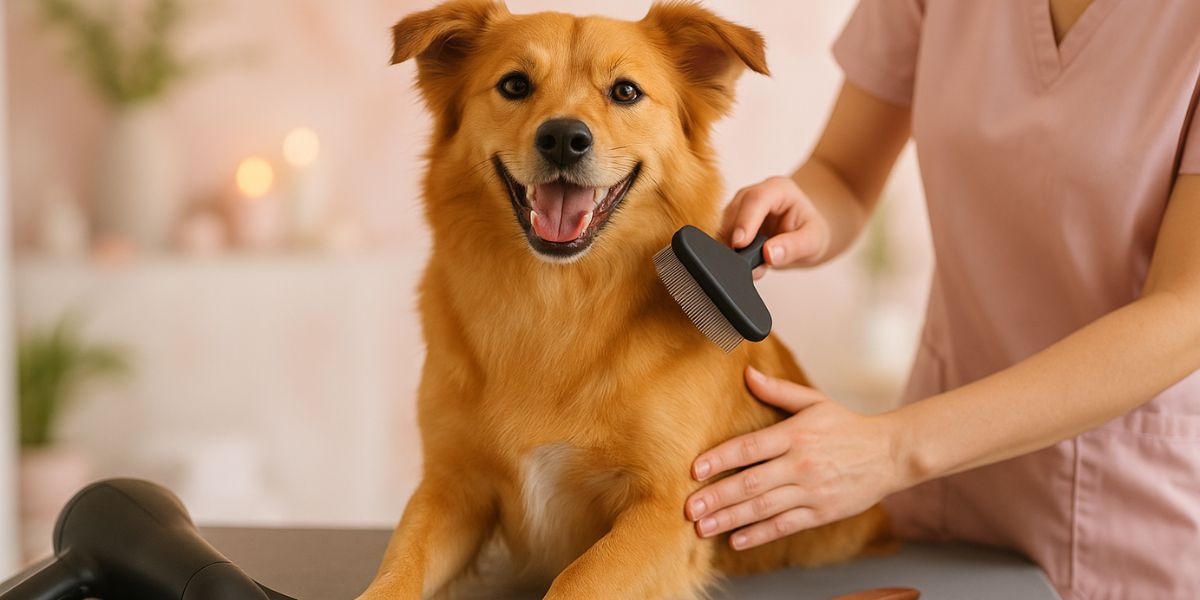
Credit: thegroomer.ae
Frequently Asked Questions
What Is Dog Grooming Behavior And Why Is It Important?
Dog grooming behavior includes actions like licking, scratching, and biting. It helps dogs clean themselves, remove dirt, and maintain healthy skin and fur. Understanding this behavior is vital for owners to ensure their pets stay healthy and comfortable.
How Does Grooming Affect A Dog’s Mental Health?
Grooming reduces stress and anxiety in dogs. It provides comfort and strengthens the bond between dog and owner. Regular grooming sessions promote relaxation and improve a dog’s overall well-being.
Can Grooming Behavior Indicate Health Problems In Dogs?
Yes, excessive grooming can signal issues like allergies, infections, or parasites. Changes in grooming habits may point to pain or stress. Monitoring grooming helps detect health problems early for timely treatment.
How Often Should I Groom My Dog?
Grooming frequency depends on breed, coat type, and lifestyle. Most dogs benefit from weekly brushing and regular baths. Regular grooming keeps fur clean, reduces shedding, and prevents matting.
Conclusion
Good grooming helps dogs stay healthy and happy. Regular care keeps their coat clean and skin fresh. It also builds trust between you and your dog. Pay attention to their behavior during grooming sessions. Gentle handling makes the experience calm and safe.
Remember, patience is key to success. Small steps lead to big progress over time. Your dog will enjoy grooming more each day. Keep these tips in mind for better results. A well-groomed dog feels loved and cared for.

Emily Barker is the founder of ChillDogLife.com, a space dedicated to helping pup parents discover the best dog products, lifestyle tips, and cozy ideas for happier homes.
A lifelong dog lover, Emily combines her passion for pets with a knack for research to share trusted recommendations on everything from toys and furniture to health and everyday care.
Her goal is simple: to make life easier, stylish, and more joyful for dogs and the people who love them.
